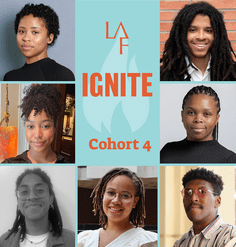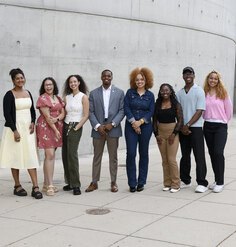Olmsted Scholar Feature: Defining a Position Within the Discipline of Landscape Architecture
By Andrew Zientek, 2011 National Olmsted Scholar Finalist
My fundamental interest within art and design is awareness. I am interested in the mechanics of experience and the subjectivity of perception. I am interested in how and why we notice and value certain things around us and not others. I am interested in the potential for objects and space to be catalysts towards new ways of seeing and being in our world.
This type of path is well worn within the art world, especially among those like Robert Irwin, Robert Rauschenberg, and John Cage. I want to bring this orientation and interest and apply it to the spaces we occupy in our daily lives. I strongly believe that the terrain we occupy daily has the potential to be a great artistic medium. I believe that using space to explore and highlight awareness has great value. This awareness is the first and most fundamental aspect of creating any type of true ecological or sustainable cultural practice. We have to be aware of something, value something, before we will take any action to preserve it. More fundamental for me than the ecological is the sheer amazement of experiencing new ways of seeing the world around us. Watching the level and quality of light fluctuate, or colors bounce off each other, or hearing a collection of noises as a symphony — these are wonderful things, around us everyday and accessible if we could only retune what we perceive.
In addition and relation was my thesis work, entitled Nervous Landscapes, which focused on the evolutionary connection between landscape and our nervous systems. The places we inhabit have real, concrete effects on our nervous system and thus our thinking and feeling. I believe that as our profession has been scaling up from site to city to region to network and incorporating economics, ecology, sociology, etc., we also need to reclaim and incorporate the science of the body. We need to really understand what the materials we use and spaces we create do to us on a cellular level. We need to understand, for example, that cooler forms of light such as CFLs or LEDs have an effect on our melatonin production which in turn affects sleep schedules, cell division and a host of related bodily functions.
Now, what to do with all of that? I, like thousands of designers before me, am faced with the challenge of taking the positions, research and interests I developed in graduate school and deploying them into the profession. I have a hazy idea of what my position within the discipline and profession of landscape architecture may be, but I don’t think it will come into focus until I test it against real work. Until I manifest the ideas in real space and place. So I am starting my own practice.
With this blog post, I hope that some of you will write in the comments below or email me directly (azientek [at] gmail.com (azientek[at]gmail[dot]com)) with stories from the field, words of wisdom that have helped you, opinions, tangential ideas or at least a funny joke. I believe that both of my related lines of interest have great value. The position within the discipline is there, but what is the position within the landscape architecture profession? Help.
Andrew Zientek received his Master's Degree in Landscape Architecture from Harvard’s Graduate School of Design in May. Through his practice, Terrain Studios, he continues his work and broadly champions the importance of landscape in our daily life.










